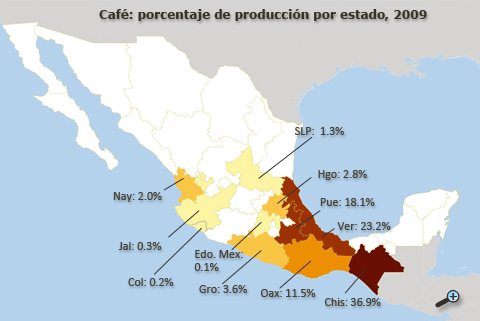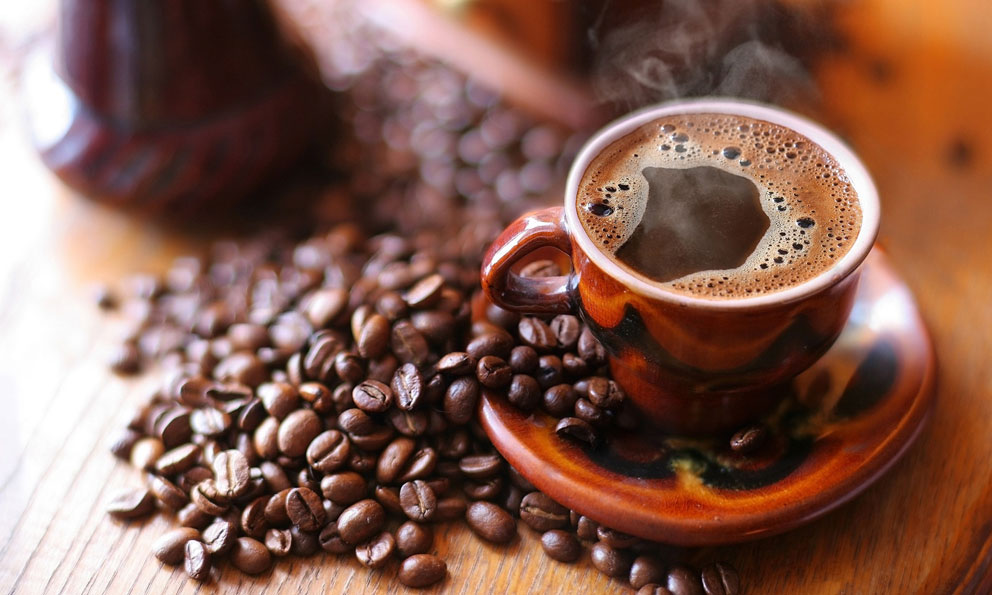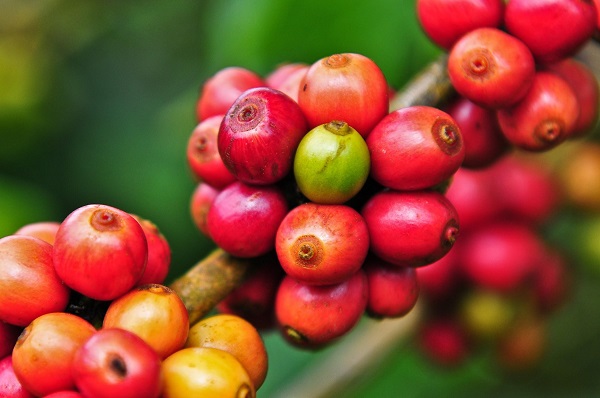Coffee is considered one of the most popular beverages in the world and has experienced constant commercial growth for the last 150 years (Daglia et al., 2000). Mexico has positioned itself as the fifth largest coffee producer in the world, exporting 83% of its production, while the rest is sold in the domestic market. coffee is produced in fourteen states of the mexican republic, located in the center-south region of the national territory; The states with the highest production are Chiapas with 34.8%, Veracruz with 25.2%, Oaxaca and Puebla with 28%. In total, these four states contribute 88% of the total national production (figueroa-hernández et al., 2016).

Reading: Cafe organico beneficios
There is a gradient of five main modalities of coffee production ranging from the two “traditional” systems with diversified shade and trees of the original vegetation, a commercial polyculture system with introduced trees, and two specialized systems, either shaded by a single species or grown in full sun (moguel and toledo, 2004). The management of coffee plantations has allowed the generation of great ecological and cultural diversity, especially within shade-grown coffee systems and organic management (Moguel and Toledo, 1996). various investigations highlight the different environmental services provided by these systems, such as: maintenance of hydrological basins, soil protection, maintenance of biodiversity, maintenance of non-timber forest resources (rfnm), carbon capture, landscape value, among others ( ruelas-monjardín et al., 2014).
The production of organic coffee not only has benefits for the environment, but also for people’s health. The main effects of consuming this drink is stimulation of the central nervous system, which increases organic activity and speeds up mental and bodily functions; it is an important source of antioxidants; and it has recently been related to the mood of people, for example, it prevents depressive episodes (liberman, 2001; al-moutaery et al, 2013). other studies ensure that coffee consumption increases short-term memory and facilitates the global memorization process. The antagonism of caffeine on astrocyte a2a receptors (cells present in the nervous system, involved in neurodegenerative disorders) has been studied and is mainly associated with a lower risk of suffering from Alzheimer’s and Parkinson’s diseases (Johnson-Kozlow et al, 2002). Among other positive effects, some studies report that caffeine exerts a protective effect against chronic liver disease in people at high risk. For example, caffeine can reverse the sedative effects of alcohol (Svikis et al, 2005). Hayat et al. (2021) from the University of Kansas, published a meta-analysis (mixture of several studies) which confirms that there are grounds for mentioning that coffee has an antifibrotic effect in patients with the disease. fatty liver of metabolic origin.
See also: Know Your Motorcycle: The Difference Between a Scrambler, a Cafe Racer and more

classifying coffee as a supplement that is harmful to health is a mistaken concept, since scientific evidence shows that its consumption can be beneficial in all the previously mentioned examples. For this reason, since 1984, the statement of the United States Medical Association Council was formulated, which mentions that moderate caffeine consumption does not affect health, as long as people’s lifestyles are adequate. different investigations agree that an “adequate” consumption ranges from 300 to 600 mg/day without any risk, taking into account the diseases and susceptibility of each person (dórea and da costa, 2005). although the caffeine content in a cup can vary due to its size, method of preparation (espresso, latte, long coffee), roasting or the type of coffee bean used (arabica or robusta). It is generally accepted that a cup provides around 80 mg of caffeine. People cannot be deprived of enjoying the exquisite aroma and flavor of good coffee, so moderate consumption of this product is recommended (2-4 cups/day).
references:
1. Ministry of Agriculture, Livestock, Rural Development, Fisheries and Food (SAGARPA). (2016). national agricultural planning 2017-2030; mexican coffee. June 23, 2021, sagarpa website: https://www.gob.mx/cms/uploads/attachment/file/256426/b_sico-caf_.pdf
2. Hayat U, Siddiqui AA, Okut H, Afroz S, Tasleem S, Haris A. The effect of coffee consumption on nonalcoholic fatty liver disease and liver fibrosis: a meta-analysis of 11 epidemiological studies. Ann Hepatol. 2021 Jan-Feb;20:100254. doi: 10.1016/j.aohep.2020.08.071.3. al-moutaery, k., al-deeb, s., khan, h., and tariq, m. (2003). Caffeine affects short-term neurological outcome after concussive head injury in rats. Neurosurgery, 53(3), 704-712.4. daglia, m., papetti, a., gregotti, c., berte, f., and gazzani, g. (2000) In vitro antioxidant and ex vivo protective activities of green and roasted coffee. journal of agricultural and food chemistry; 48:1449-54. 4. dorea, j. g., and gives coast, t. h. meter. (2005). Is coffee a functional food? british journal of nutrition, 93(6), 773-782.5. Figueroa-Hernández, E., Pérez-Soto, F., and Godínez Montoya, L. (2016). the coffee market in mexico. ti manual, 33. 6. johnson-kozlow, m., kritz-silverstein, d., barrett-connor, e., and morton, d. (2002). coffee consumption and cognitive function in older adults. american journal of epidemiology, 156(9), 842-850.7. Calmar, J. meter. (2005). The influence of caffeine on voluntary muscle activation. medicine and science in sport and exercise, 37(12), 2113-2119.8. lieberman, h. r. (2001). The effects of ginseng, ephedrine, and caffeine on cognitive performance, mood, and energy. nutrition reviews, 59(4), 91-102.9.moguel, p., and toledo, v. (2004). preserve producing: biodiversity, organic coffee and productive gardens. biodiversity 55, 2-7.10. moguel, p., and toledo, v. (nineteen ninety six). coffee in mexico, ecology, indigenous culture and sustainability. sciences, no. 43, July-September, 40-51. 11. ruelas-monjardín, l., nava-tablada, m., cervantes, j., and barradas, v. (2014). Environmental importance of shade-grown coffee agroecosystems in the central mountainous area of the state of Veracruz, Mexico. Wood and Forests, 20(3), 27-4012. svikis, d. s., berger, n., haug, n. A., and Griffiths, R. r. (2005). Caffeine dependence in combination with a family history of alcoholism as a predictor of continued caffeine use during pregnancy. american journal of psychiatry, 162(12), 2344-2351.
See also: Top 20+ đồng phục cafe hàn quốc tốt nhất
13. stavrico b. et al. Variability in caffeine consumption from coffee and tea: possible relevance for epidemiological studies. fd chem toxic 26(2): 111-118. 1988.
See also: Tất tần tật thông tin liên quan tới Highland Coffee tuyển dụng
lic. Yareli Pérez Bautista
See also: Tất tần tật thông tin liên quan tới Highland Coffee tuyển dụng
- visits: 2683





